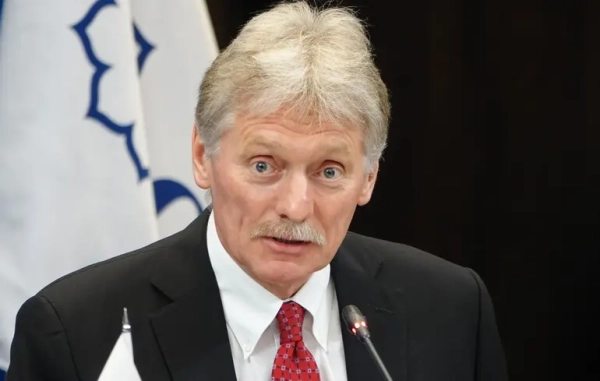
The first Democratic presidential debates are Wednesday and Thursday nights in Miami, and climate change is very likely to come up. Miami is a city plagued by rising sea levels and extreme weather threats, providing an easy opening for the candidates to sell their climate plans. Meanwhile, many primary voters are deeply concerned about the issue and will be eager to hear it discussed.
A meaningful debate question on climate change needs to go beyond simply acknowledging the problem and scolding recalcitrant Republicans, however. It should also help voters distinguish the 20-odd candidates and find out who would be the best leader in combating greenhouse gas emissions and preparing for a warming world.
Here, I propose six questions that could reveal some important differences between the presidential hopefuls.
Who is liable for climate change?
Rising average temperatures have already proved deadly and are beginning to hammer the US economy. It’s only going to get worse. The National Climate Assessment estimated last fall that climate change could cost the US economy upward of $500 billion per year by the end of the century.
These are costs we all bear as a society. But many of the producers of heat-trapping gases have spewed them into the sky for free for decades while profiting immensely, obfuscating the science, and stalling political will.
There’s now a wave of climate change lawsuits around the country trying to hold the relevant parties accountable. The defendants in these suits include fossil fuel companies, as well as the US government itself. The next administration will have to decide if anyone should be held accountable, and whom.
What does the US owe the rest of the world?
One of the principles of the 2015 Paris climate agreement was that every country has to contribute to cutting greenhouse gas emissions. In order to limit warming this century to 1.5 degrees Celsius, the high-ambition target under the Paris agreement, the world would have to halve total emissions by 2030, reach net-zero emissions by 2050, and go carbon-negative thereafter.
But some countries have contributed far more to the problem than others, and the United States is far and away the leader in cumulative global greenhouse gas emissions. And US emissions are on the rise again.
So it stands to reason that the US should do more of the heavy lifting on climate change. The question is what form that should take and how the US will bring other countries on board as well, whether that’s through sharing technology, investing in clean energy abroad, or even cash transfers. Given the latitude a president has in establishing a foreign policy, this is an area where a candidate can implement their own vision.
Does natural gas have a future in the US?
The boom in shale gas across the US has dethroned coal as the largest source of electricity in the United States. Natural gas emits about half of the greenhouse gas emissions of coal and has been a key reason why emissions in the US have stayed level or declined over the past decade before rising again, even as the economy has grown.
But natural gas still has a large carbon footprint. It can leak methane, a gas that’s much more potent in trapping heat than carbon dioxide. And every new natural gas power plant is a decades-long bet that we will continue using the fuel.
Related
More natural gas isn’t a “middle ground” — it’s a climate disaster
However, limiting climate change means ramping down greenhouse gas emissions as fast as possible from every source, including natural gas. That means the US would have to invest heavily in carbon capture systems for natural gas. Or stop using it altogether. A presidential hopeful should have an answer for how natural gas fits into their climate change proposals, if at all.
At what point do we stop rebuilding?
About 40 percent of the US population lives in a coastal county. More than 41 million live in flood zones. More than 4.5 million homes are at high or extreme wildfire risk.
Now the seas are rising. Extreme rain events are dumping more water. Forests are drying out. That means more climate-related destruction is in store. Disasters have already cost the US economy billions of dollars. That bill will rise.
The questions then are when does it make sense to rebuild to the status quo, when should we invest in resilience, and when should we retreat. There aren’t easy answers, certainly no one solution that can apply in all circumstances.
But a candidate should explain their thinking about how they will approach the aftermath of a disaster, whether they will try to use a cost-benefit test or prioritize restoring communities as they were. And they should also say whether there would be a point of no return.
How much will you steer the market?
Renewable energy is rapidly dropping in cost and is now the largest source of new power generation. Coal power plants meanwhile are shutting down left and right. More automakers are offering electric cars. Homes and offices are becoming more efficient.
However, clean technologies are not coming online fast enough, and greenhouse gas emissions are still growing. Many economists favor a tax on carbon dioxide or a cap-and-trade mechanism to price the externalities of greenhouse gases and to accelerate the race toward zero emissions. But given that time is running out, is climate change something that can solely be left to the whims of the free market?
Candidates should answer whether they would be amenable to tactics like restricting the supply of fossil fuels, cutting them off entirely, federally mandating clean energy, or subsidizing renewables in perpetuity.
Would you yield anything to bring the other side on board?
Once upon a time, Republicans not only acknowledged climate change but brought their own solutions to the table. President George H.W. Bush took the United States into the United Nations Framework Convention on Climate Change, laying the groundwork for an international climate treaty. Former House Speaker Newt Gingrich in 2008 appeared in an ad with the current House Speaker Nancy Pelosi to call for action on climate change.
Gingrich later backtracked and said he regretted the ad. Republicans have in the years since downplayed, obfuscated, or ignored climate change.
Now there’s a resurgence of interest on the right in coming up with solutions to rising average temperatures. Reagan-era Republican officials James Baker III and George Shultz are leading the charge for a carbon tax and dividend proposal.
But Republicans are still Republicans. Much of the social justice language and expansions of federal government needed for measures like a job guarantee in the Green New Deal are anathema to the GOP. It’s not clear who will have control of Congress after 2020, so presidential contenders should articulate how they will work with Republicans on a climate agenda and what concessions they’d make to bring them on board. Or they better have a really good backup plan for getting around them.
Sourse: vox.com






